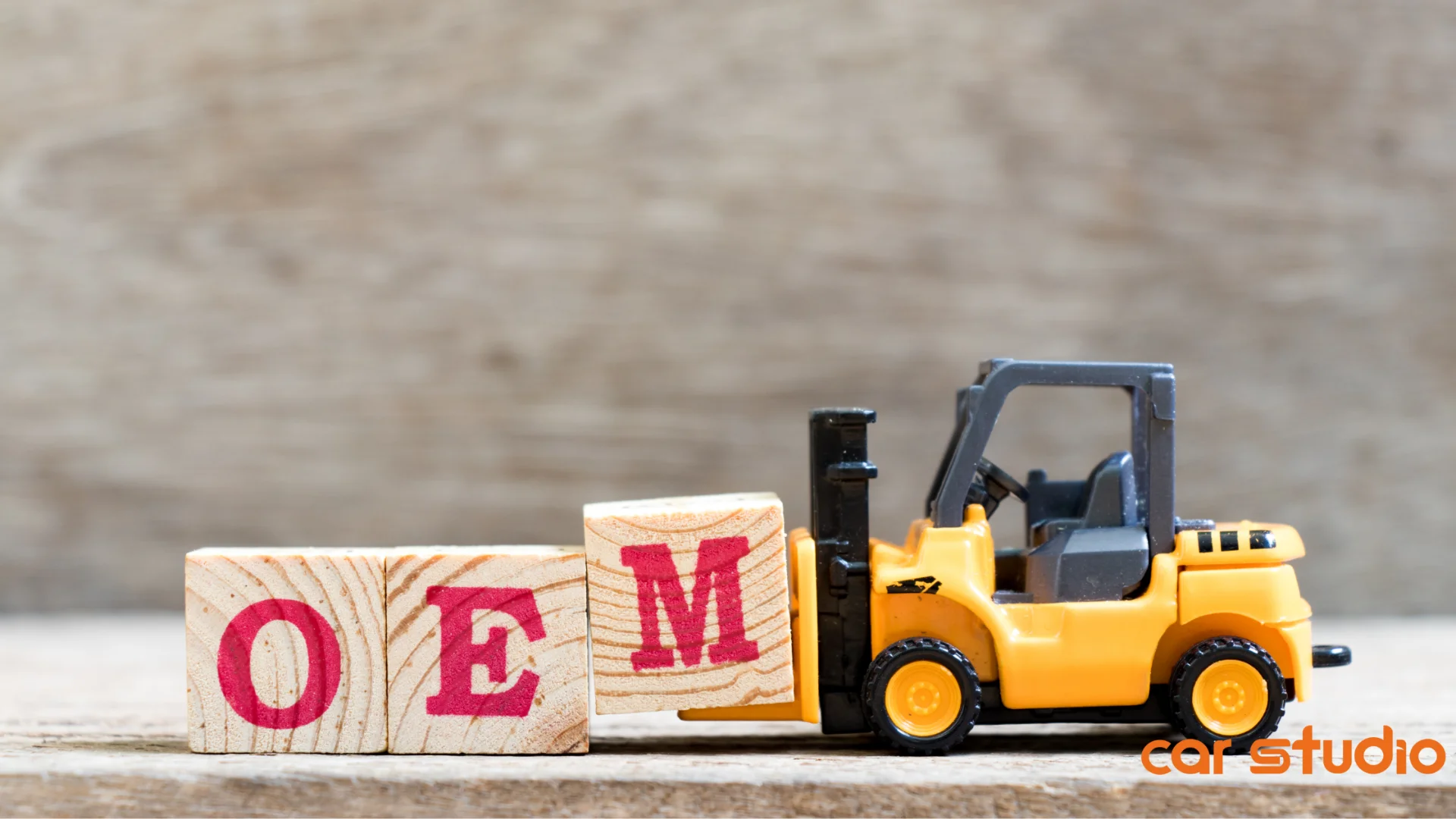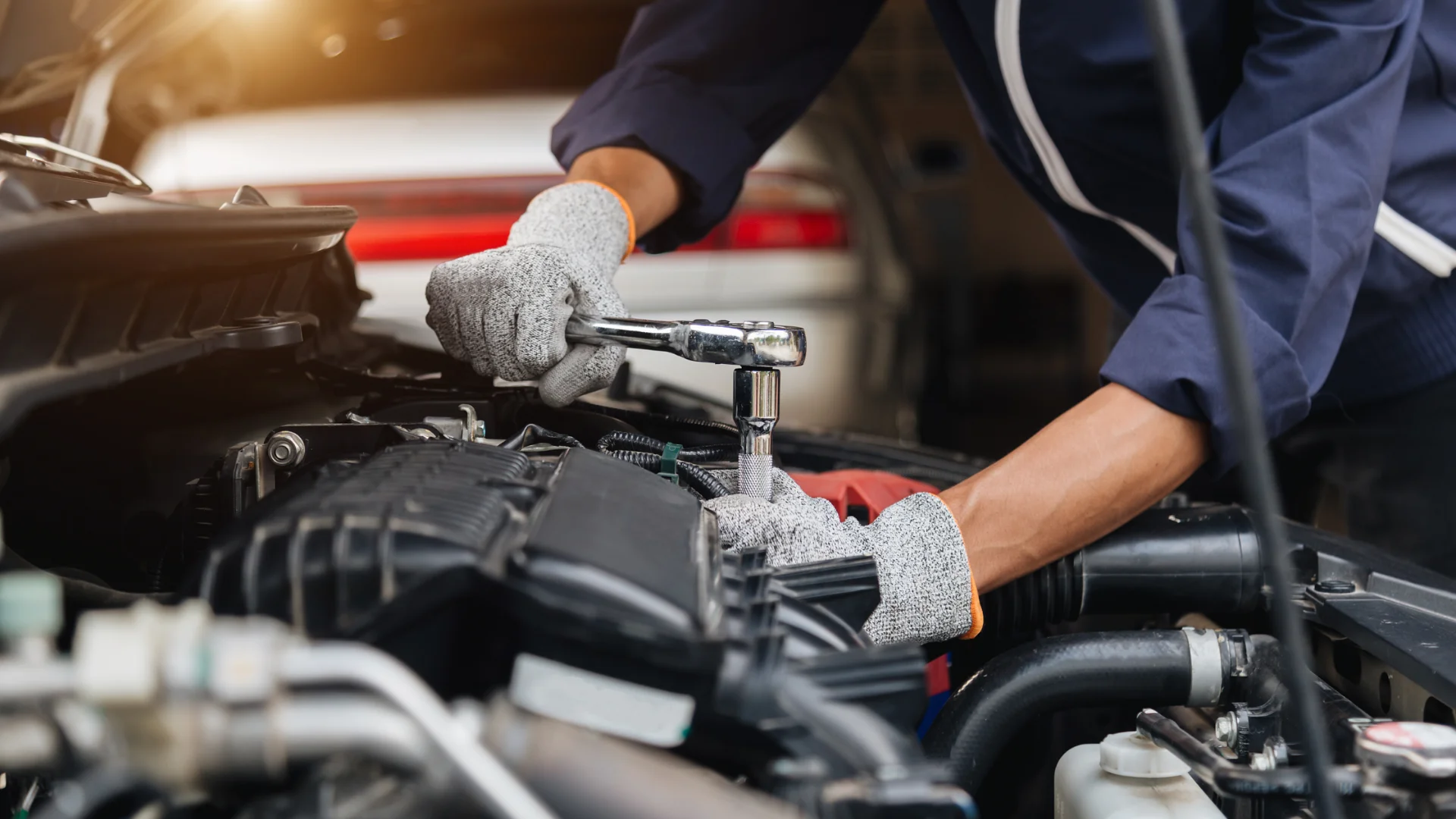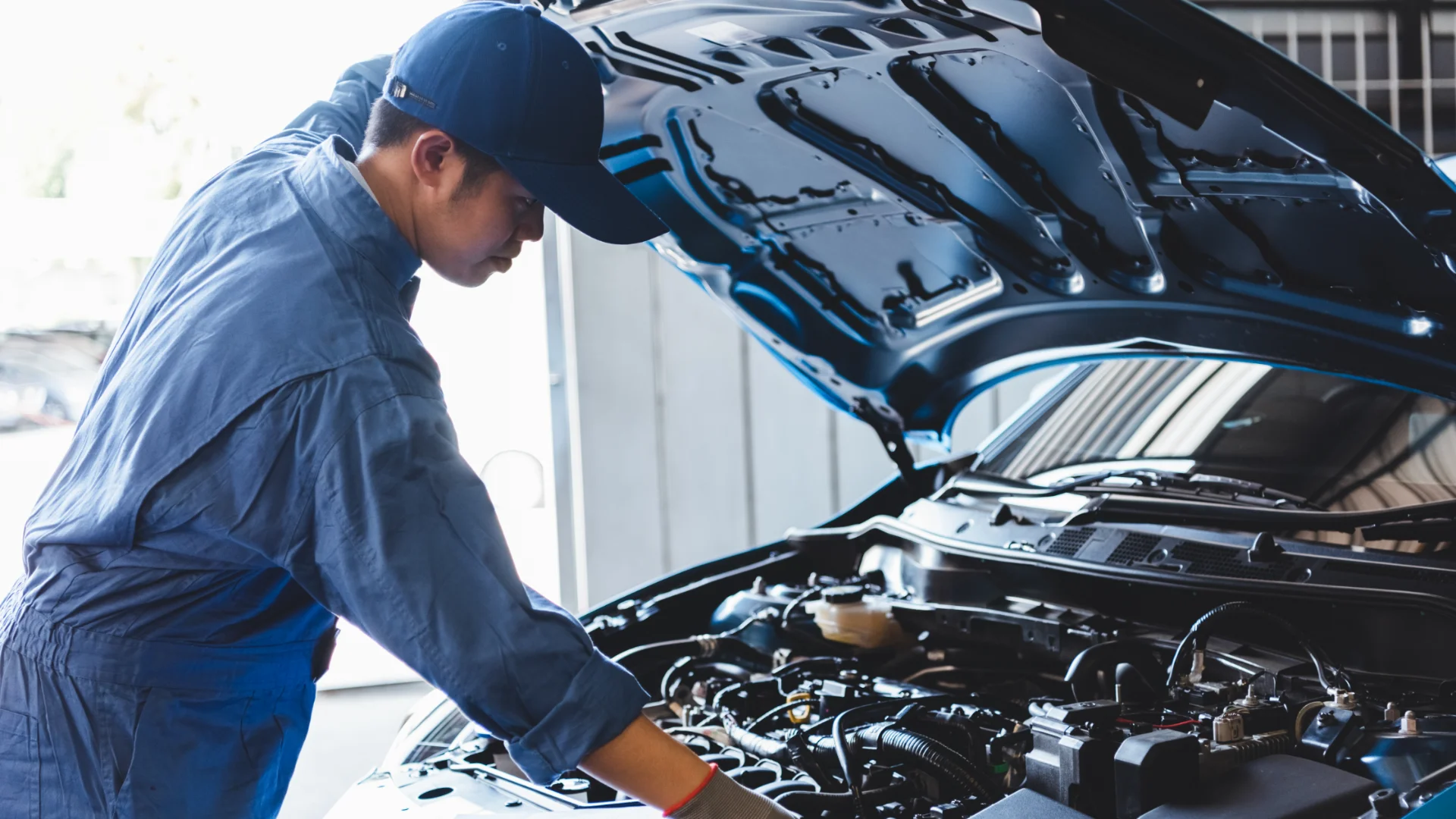
Customizing Image Style: How Brands Use AI to Keep Visual Consistency
Introduction: Why Car Images Speak Louder Than Words
Scroll through any automotive listing today whether it’s a global OEM launching its flagship SUV or a local dealership uploading used cars to an online marketplace and you’ll notice something striking: the photo does the talking long before the description does. Buyers don’t read first; they look. And what they see in those first few seconds either pulls them in or pushes them away.
This is why visuals aren’t just marketing decoration in the automotive sector they are the core of persuasion. A blurry, inconsistent photo signals neglect. A crisp, well-branded photo signals trust. And in a digital-first market, where most car buyers now complete the majority of their research online before stepping into a showroom, that trust is priceless.
But here’s the challenge: keeping visuals consistent and high-quality at scale. A single dealership may handle hundreds of vehicles, while an OEM might manage thousands of listings across multiple countries. Different lighting, different photographers, different platforms it’s a recipe for chaos.
This is where Artificial Intelligence enters the scene, not as a flashy add-on but as a quiet, dependable stylist. AI tools don’t just edit photos; they enforce a brand’s identity across every pixel. They transform raw car shots into studio-quality imagery that looks aligned, intentional, and undeniably professional.
Or, as one global automaker recently described the challenge: “We don’t just need our cars to look good we need them to look ours.”
The Psychology of Visual Consistency
Consistency in visuals isn’t about perfectionit’s about recognition and familiarity. The human brain loves patterns. When a customer repeatedly encounters the same visual language same lighting style, background tone, logo placement—they start building subconscious connections:
“This looks premium.”
“This feels trustworthy.”
“I know this brand.”
That’s why global OEMs invest millions in style guides. But in practice, enforcing those guides across continents and thousands of resellers is almost impossible without AI.
Think of it this way: when you see a car ad from BMW, Mercedes, or Tesla, you don’t just recognize the modelyou recognize the brand mood. Cool tones, sleek reflections, certain backdrops it’s all intentional. Now, AI is democratizing this level of consistency, putting brand-style enforcement in the hands of every dealership, not just the big global players.
In fact, insights from Car Studio AI’s research on scaling OEM visual identity highlight a key reality: brand identity breaks down at the dealer level unless it’s automated. A luxury brand might maintain a global visual identity in campaigns, but when the same car appears on a used listing uploaded by a regional dealer, it can look completely disconnected. AI closes that gap ensuring a Mercedes looks like a Mercedes, whether it’s shot in Stuttgart or a suburban lot in Kansas.
The Impact of High-Quality Visuals on Automotive Sales
Visual Appeal and the Buyer’s First Impressions
It’s a simple truth: cars are bought with the eyes first, wallets second. A potential buyer scrolling through listings is making split-second decisions. If the car photo looks dull, poorly lit, or inconsistent, most people won’t even bother to click. On the other hand, a striking, polished image invites curiosity, which leads to clicks, which lead to conversations and eventually sales.
Studies on e-commerce confirm this. Visual content is the single strongest factor in online purchasing decisions, often more influential than written descriptions. In the automotive world, where trust and perceived quality drive the buyer’s choice, visuals are the silent salespeople.
A used hatchback can suddenly look premium when photographed correctly. A luxury SUV can lose its aura entirely if presented with a cluttered background. The stakes are high, and AI ensures every car always shows up at its best.
Beyond Aesthetics: Trust and Credibility
Customers often equate photo quality with seller credibility. A dealership showcasing poorly presented cars signals carelessness. A dealership with uniform, professional-looking photos signals reliability and seriousness.

This is especially critical in used-car markets, as highlighted in Car Studio AI’s analysis of studio-quality photos for used cars. Buyers in this segment are already cautious. They worry about hidden flaws, undisclosed histories, and exaggerated claims. But when the visuals are consistent, sharp, and transparent showing the car in clear detail buyers feel reassured.
Put simply: good photos don’t just make cars look better they make sellers look trustworthy.
AI as the Brand Stylist: Turning Cars into Visual Stories
When people hear “AI in photography,” they often imagine filters or gimmicks. But in reality, AI in automotive imagery is more like a personal brand stylist. It doesn’t just retouch photos—it reshapes how a brand is perceived online.
AI-Driven Background Replacement and Enhancement
One of the most powerful features AI brings to dealerships is the ability to swap and enhance backgrounds instantly. Imagine taking a photo of a car in a crowded lot. Traditionally, that would require reshoots or heavy Photoshop work to clean up. With AI, the background can be replaced with a clean, branded, or contextually appealing scene in seconds.
For instance, a luxury sedan can be placed against a sleek urban backdrop to emphasize modernity. An off-road SUV can be showcased in a rugged environment even if the original photo was snapped in a dealer’s parking lot. This isn’t trickery; it’s storytelling through context.
Adding and Modifying Shadows for Lifelike Realism
Flat photos are a dealership’s worst enemy. Without depth and grounding, cars can look like cutouts pasted on digital backdrops. Shadows are what make an image feel real and AI is remarkably skilled at manipulating them.
Instead of a car floating awkwardly above the ground, AI ensures that shadows fall naturally, angles match lighting, and reflections add a layer of authenticity. These subtle details might go unnoticed by casual viewers, but subconsciously they create the impression of professional, studio-quality photography.
Lighting Corrections and Mood Setting
Lighting is often the biggest variable in dealership photography. Morning sunlight, cloudy afternoons, harsh indoor fluorescents all create inconsistencies. AI steps in to normalize these conditions, giving every car photo a balanced, polished finish.
And it’s not just about balance. AI can also set a mood. Warm lighting might give a family SUV a welcoming, homely vibe. Cool tones might reinforce the futuristic appeal of an EV. Just as a fashion photographer uses light to set emotion, AI does this at scale for cars no studio equipment needed.
Consistency Across Platforms: The Challenge of a Fragmented Market
For global automotive brands, keeping a consistent look is like trying to keep a convoy of cars perfectly aligned on a highway that stretches across multiple continents. One misstep and the formation breaks down.
Original Equipment Manufacturers (OEMs) spend millions defining their visual identities: style guides, photo manuals, and strict creative direction. But here’s the truth—once the imagery reaches local dealers, marketplaces, or resellers, those rules often break.
A car listed on a German website may have a sleek, minimalist background.
The same model listed in Brazil might appear under harsh sunlight, surrounded by unrelated vehicles.
Meanwhile, a U.S. dealer could upload a photo with mismatched shadows or a cluttered lot in the background.
Suddenly, the carefully crafted global brand identity looks scattered.
Insights from Car Studio AI’s Scaling OEM Visual Identity with AI piece highlight this exact issue: without automation, brand consistency disintegrates at the dealer level. AI becomes the invisible enforcer, ensuring that regardless of where or how a car is photographed, the final image aligns with brand standards.
Think of AI as a quality-control system for visuals:
It standardizes backgrounds, color tones, and logos.
It enforces the same crop ratios across all images.
It guarantees that whether you’re in Paris, Detroit, or Singapore, a BMW feels like a BMW.
This consistency doesn’t just please brand managers it builds customer recognition. When a buyer sees similar imagery across ads, social platforms, and websites, the repetition strengthens trust. The brain says: “I know this brand. I can rely on it.”
Used Cars & Authenticity: Why Studio-Quality Photos Matter Even More
If consistency is the backbone of new car marketing, authenticity is the heart of used car sales.
Buying a used vehicle is an exercise in risk management. Every buyer is wondering:
“What’s wrong with it?”
“Why is it being sold?”
“Can I trust what I see online?”
In this landscape, the photo becomes more than marketing it becomes evidence. And if that evidence looks sloppy, buyers assume the worst.
Car Studio AI’s article Studio-Quality Photos for Used Cars nails this point: even budget-conscious buyers respond strongly to professional-looking imagery. Crisp, well-lit photos reduce uncertainty. They show scratches honestly, highlight interiors clearly, and present the car with a sense of pride rather than concealment.
This is where AI gives used-car dealers an edge. Instead of expensive studio setups, they can rely on automated enhancements:
Background cleanup makes even small dealer lots look professional.
Shadow correction gives cars depth and realism.
Lighting normalization ensures cars don’t look dull or overly glossy.

The result? Cars look transparent, trustworthy, and worth a click.
And here’s the twist: authenticity doesn’t mean making the car look flawless. In fact, AI works best when it balances truth and polish. Buyers don’t expect a 10-year-old hatchback to look brand-new but they do expect it to look cared for. Clean, consistent imagery sends exactly that message.
Practical AI Workflows: From Raw Photos to Sales-Ready Listings
Here’s the reality for most dealerships: cars don’t arrive in perfect photo-ready conditions. Vehicles are photographed in busy lots, under inconsistent lighting, often by staff who aren’t professional photographers. Traditionally, cleaning up those photos meant hours of manual editing or settling for “good enough” images that undersell the car.
AI changes that workflow entirely. Inspired by Car Studio AI’s guide on how to edit car photos like a pro, here’s what a typical AI-powered process looks like:
Snap the Car Quickly, Anywhere
Staff take simple shots parking lot, service bay, even outdoors. No need for expensive backdrops or lighting kits.Batch Upload to AI Platform
Instead of editing one by one, dozens of images can be uploaded in bulk. AI recognizes car shapes instantly and prepares them for processing.Automated Enhancements Run in Seconds
Background replacement or cleanup
Shadow adjustment for realism
Lighting normalization for consistency
Optional branding elements (logo watermark, frame, template)
Dealer Review and Light Touch-Ups
Human staff step in only if needed maybe to crop tighter or adjust one detail. The heavy lifting is already done.Instant Publishing
The polished photos sync with digital showrooms, marketplaces, or the dealer’s website. Cars go live faster, with studio-quality visuals that stand out.
This workflow isn’t just about speed it’s about scalability. Whether a dealer lists 20 cars a week or an OEM manages thousands globally, AI ensures the process is consistent, reliable, and almost effortless.
Customization by Segment: Tailoring AI to Fit the Car’s Story
Not every car should be presented the same way. Buyers approach different segments luxury sedans, rugged SUVs, affordable hatchbacks, futuristic EVs with different expectations. AI shines because it can adapt the visual language to match each category.
Luxury Vehicles
Luxury buyers expect refinement. AI emphasizes:
Minimalist backdrops (sleek cityscapes, modern architecture).
Cool lighting tones that convey elegance.
Subtle reflections on paint to highlight craftsmanship.
Every photo whispers exclusivity, reinforcing the premium brand story.
SUVs and Off-Road Vehicles
SUV buyers crave adventure and capability. AI adapts by:
Placing vehicles in natural backdrops (mountains, forests, rugged trails).
Enhancing contrast and depth to showcase size and power.
Adding dynamic shadows that make the SUV look grounded and sturdy.
The photo becomes less about luxury polish, more about readiness for life’s journeys.
Affordable Compacts and Hatchbacks
Here, the focus is on practicality and trustworthiness. AI highlights:
Clean, bright lighting to make cars approachable.
Neutral, uncluttered backgrounds that avoid overwhelming details.
A subtle emphasis on interior shots, reinforcing functionality.
Consistency here isn’t about flash it’s about honesty and accessibility.
Electric Vehicles (EVs)
EV buyers often lean toward innovation and sustainability. AI helps present them with:
Futuristic backgrounds (sleek modern urban scenes).
Cool or slightly green-tinted tones to suggest eco-friendliness.
Highlighting unique EV details like charging ports, digital dashboards.
Each EV photo tells a story not just of a car, but of a lifestyle aligned with progress.
Future Trends: Where AI Imagery is Heading Next
AI in automotive photography is still in its early chapters. What we’re seeing now—background replacement, lighting correction, branding overlays—is just the beginning. The next phase is all about personalization, immersion, and real-time adaptability.

Hyper-Personalized Visuals
Imagine a buyer browsing a dealership’s website. Instead of seeing the same generic car photo everyone else sees, AI generates visuals tailored to their profile. A family buyer might see the SUV staged in a suburban driveway with bikes in the background. A young professional might see the same SUV parked in a chic downtown setting.
The core car stays the same, but the story shifts to match the audience. That’s where AI is heading making every buyer feel like the car was photographed just for them.
Virtual & Interactive Showrooms
Static photos are powerful, but interactive visuals are the next frontier. AI is already being used to create 360° car spins, virtual test drives, and immersive AR/VR showrooms.
Instead of imagining how a car would look in their driveway, a customer could place a 3D version of it there with a smartphone. Instead of scrolling through still shots, they could walk around the car virtually opening doors, peeking at interiors, adjusting paint colors all powered by AI-enhanced imagery.
Real-Time Visual Adaptation
Today, dealers edit once and publish. Tomorrow, AI could allow real-time adaptation:
Photos auto-adjusting for seasonal campaigns (holiday themes, summer vibes).
Marketplace listings updating imagery to match platform trends.
Even regional differences cars listed in Nordic countries might show snow-ready backdrops, while in Southern Europe they appear in sunny Mediterranean light.
This dynamic flexibility turns imagery from static content into a living marketing tool.
Conclusion: AI as the New Backbone of Automotive Marketing
For decades, car sales have relied on glossy brochures, showroom lighting, and carefully staged ads. But the market has shifted today, the first handshake happens online, through a photo.
Artificial Intelligence has become more than an editing tool; it’s now the guardian of visual identity and the accelerator of trust. From OEMs protecting their global branding, to used-car dealers presenting honest transparency, AI ensures every car is shown at its best, consistently and authentically.
The question is no longer “Should we adopt AI for imagery?” It’s “How quickly can we make it central to our strategy?”
For dealerships, embracing AI is about efficiency and cost-effectiveness. For global brands, it’s about unity and recognition. For buyers, it’s about confidence.
And as AI evolves, the gap between physical showrooms and digital ones will shrink even further until seeing a car online feels nearly the same as standing next to it in real life.
In a crowded marketplace, that’s not just an advantage. It’s survival.
FAQ: Enhancing Your Automotive Visual Strategy with AI
How does AI ensure consistency of car images across different platforms?
AI uses templates, branding presets, and automated corrections to make sure every photo no matter where it’s taken matches the same look and feel. This covers background, lighting, logo placement, and overall style.
Can AI replace traditional car photography?
Not entirely. Professional photography is still valuable, but AI takes those raw shots and scales them into polished, brand-aligned imagery. Think of AI as the stylist and producer that ensures consistency after the photographer has done their part.
Is AI cost-effective for dealerships?
Absolutely. Instead of hiring designers or waiting days for manual edits, AI can process images in bulk within minutes. Faster listings mean faster sales, and reduced editing costs mean better margins.
How does AI handle different lighting conditions?
AI can correct for inconsistencies like shadows, glare, or dull lighting. More than that, it can set specific moods for example, a warm tone for family SUVs or cooler tones for luxury sedans.
What are the first steps to integrating AI into our marketing strategy?
Start small. Identify the most pressing pain point (speed, consistency, or branding) and run a pilot project with a limited batch of listings. Once you see the results quicker sales cycles, better online engagement you can scale across the dealership or brand.
Where is AI imagery heading in the next five years?
Expect more personalization, real-time adaptability, and immersive 3D/AR experiences. The static car photo will evolve into a dynamic, customer-tailored visual journey.
